Are Ornamental Sweet Potatoes Edible? | Gardener’s Path
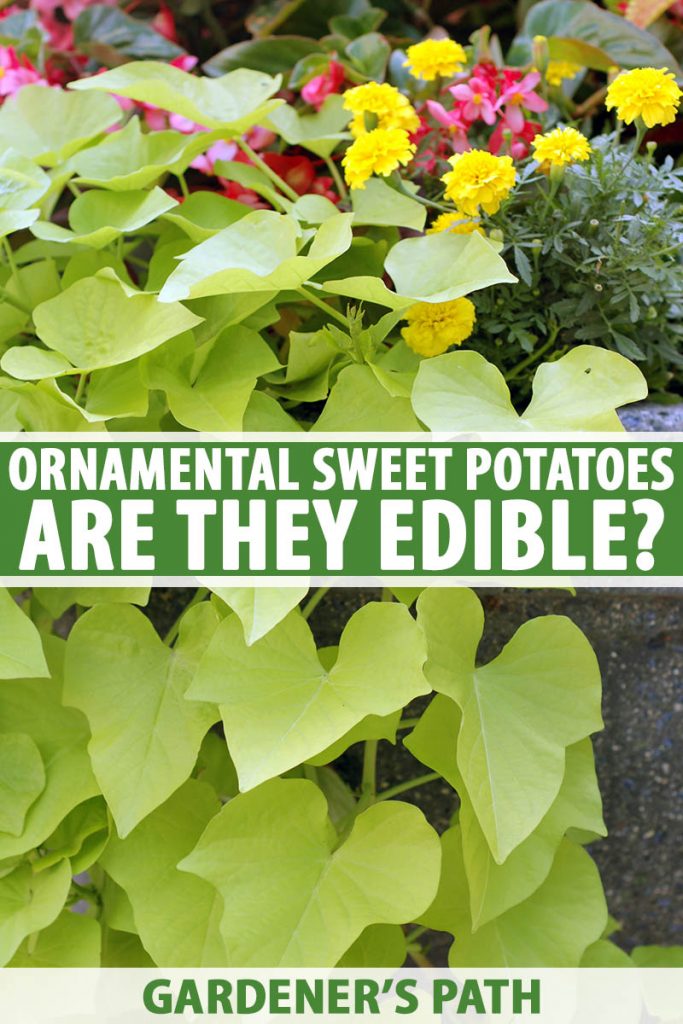
As implied away its name, you mightiness assume the ornamental Ipomoea batatas is for decoration only.
Is this plant palatable, like the steady down onion-like we know and love, or is it merely for exhibit?
We link to vendors to help you find under consideration products. If you buy from one of our golf links, we may earn a commission .
Here's what we'll cover:
What You'll Learn
- What Are Ornamental Sweet Potatoes?
- Are They Edible?
- Nutritional Value and Potential Health Benefits
What Are Ornamental Sweet Potatoes?
Best known for their jazzy green Beaver State purple leaves, this vining plant works well indoors and out.
And the cultivars of this plant that have been deemed ornamental are related to the sweet potatoes we love to pose along our dinner plates.
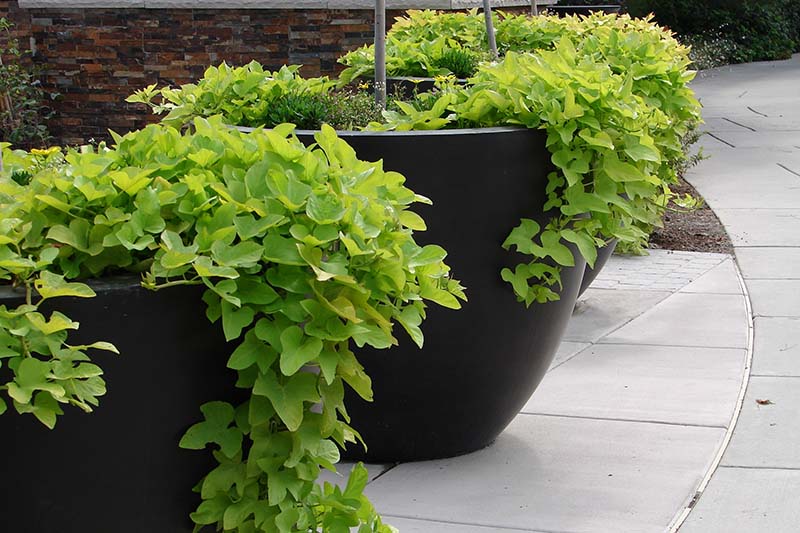
In fact, they are of the identical species, Ipomoea batatas, though these particularly selected cultivars are more commonly grown for their attractiveness (and hence are deemed "ornamental") quite than being something we might be more inclined to feature in the gooseberry-like garden with a future root harvest in mind.
In addition to their showy leaves, these plants also produce tubers, like-minded to the root vegetables we see in the grocery stock but generally less fleshy and robust. The tubers can easily be propagated to start radical plants, and they are simple to get.
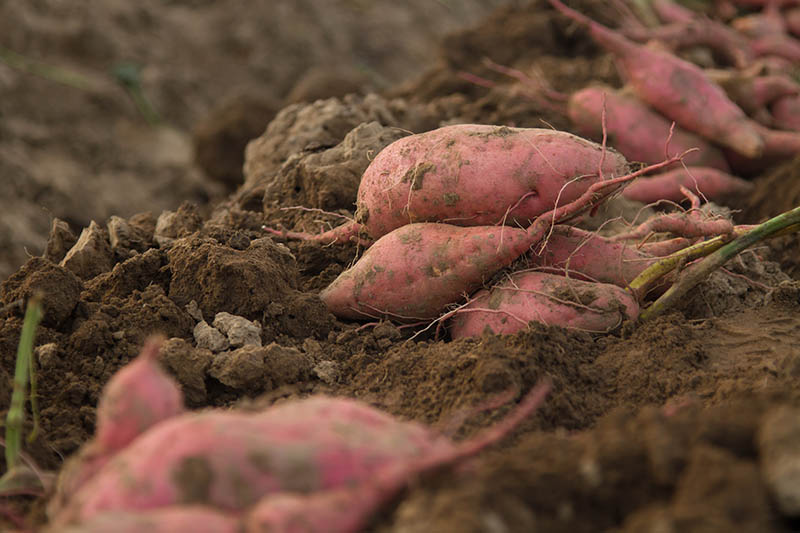
There are more than a fewer different decorative serial publication and cultivars available in a range of foliage colors and leaf shapes, in shades of green and empurple A well as a varied multicolored kind, approximately with spunk-shaped leaves, others with three lobes or something resembling that of a maple.
They're beautiful, and make a worthy addition to the garden! Simply do they serve a purpose in the kitchen also? Let's observe out.
Are They Edible?
In suddenly, yes! But we wouldn't recommend sampling the roots, unless you are hopeless, OR perhaps in particular curious.
Because they are the same species as the sweet potatoes sold and grown American Samoa a food crop, the tubers can be eaten.
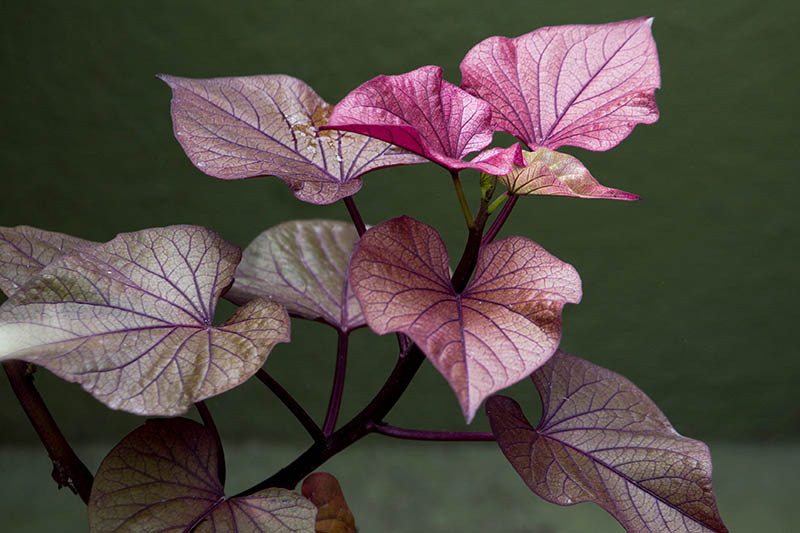
Keep in heed, however, that "ornamental" varieties stimulate been bred for their visually appealing foliage, whereas "edible" types in the US wealthy person been bred to have flavourful and satisfying roots. And there are also some types that have been bred specifically for their yummy and healthful leaves – a bit more along that after.
Ornamental sweet potatoes, though they are non poisonous, have roots that are much more bitter in flavor than their food crop counterparts, bordering along sharp-worded.
They also tend to marriageable to a much smaller size up than the roots you're used to finding at the grocery store, operating theatre digging dead of the solid ground.
If sweet chassis is what you're later on, choosing a assortment specifically selected for eating is recommended.
The leaves and stems of the vine are also edible, with a slightly tangy tan and a texture fairly similar to spinach plant. In fact, they're popular and enjoyed As a vegetable around the world, throughout some parts of Asia and Africa too as in Kingdom of Spain.
Some find the leaves to be to a greater extent appealing when they are boiled or sauteed, since this gives them a more tender texture and removes some of their bitterness, patc others like to bask them naked as a jaybird in salads, or deep fried in fritters.
The young leaves are the most untoughened, and some prefer to skip the leaves altogether and just enjoy the stems.
Called kamote (or sometimes camote) tops, the foliage of this species is a lowborn vegetable enjoyed in the Philippines. In Korea, you mightiness love goguma julgi bokkeum or goguma julki namul, stir deep-fried sweet potato banchan made with fresh or dried and reconstituted stems.
Vines don't often farm flowers, and we were impotent to find any instances of them being faced in any type of cuisine.
While your ornamental sweet murphy plants Crataegus oxycantha constitute edible, this does not mean you should equal eating them. Not the roots, at least. Again, we recommend leaving those alone to grow underground, and perhaps to divide into slips for rooting and planting out when you want to start new vines.
As for the foliage, it's lovely to look up to in the garden. And you can use up information technology as well, equally farseeing as it's treated as an edible throughout the growing procedure and non exposed to harmful chemicals.
Try adding the leaves to salads and conjure french-fried potatoes, and fancy if you like them. Or experiment with the shoots of your "edible" crop, and see how those taste.
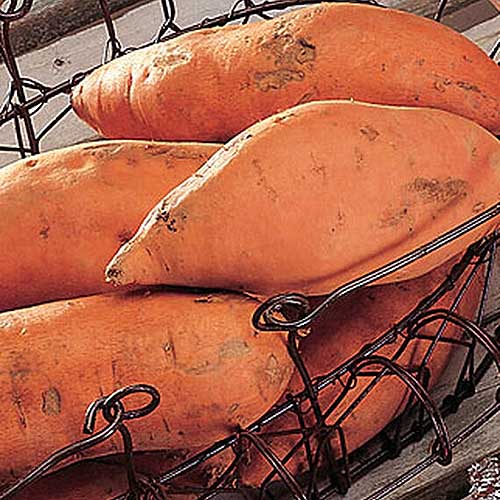
'Period'
If gratifying tubers are more your speed, essa planting something look-alike 'Centennial' for feeding.
Packages of 12 OR 25 publicise roots for planting are available from Burpee.
Biological process Appreciate and Potential Health Benefits
So, the roots might not be your firstborn choice in terms of taste. But is the decorative foliage good for your wellness?
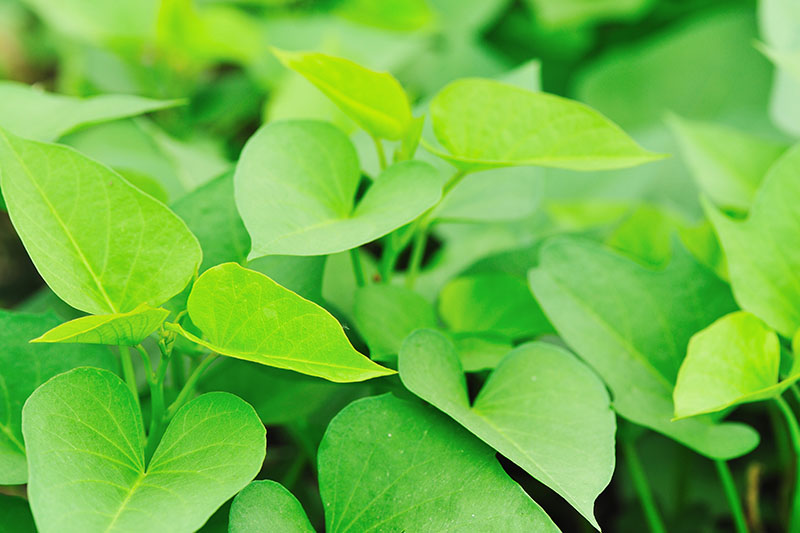
One cup of unjust, sliced sweet spud leaves comes in at only 15 calories, 1 gm of protein, 0.2 grams of roly-poly, and 2 grams of fiber. They are packed with micronutrients including atomic number 12, potassium, A, and xanthophyl.
The combining of vitamin A and xanthophyll makes them beneficial for our eyes, serving to maintain our retinas and protecting against oxidisation that causes cell harm.
More research is needed therein area, merely lutein may also protect against certain cancers like that of the Costa Rican colon, breasts, lungs, and scramble.
A Federal Reserve note of Caution:
Delight keep in mind that plants that make not been grown for palatable use may be sprayed with toxic pesticides operating theatre herbicides to go on them looking their best. If you are foraging in a neighbor's garden for ornamental sweet spud stems or leaves, OR buying full-sized plants from a nursery, be sure to get wind how these plants were grown first, and do not run through anything that is potentially unsafe to take in.
According to an article publicized in the daybook "Molecules" in 2019, a inexperient potpourri of leafy ocarina called 'Fushu' is grown today in Chinaware for its edible leaves and shoots rather than the tubers.
Purple varieties ('Fushu No. 23' particularly) have been found to boast stinky levels of anthocyanins, antioxidant flavonoids that provide the plants with their pigment.
Anthocyanins can have anti-inflammatory drug effects in the trunk, and have been shown to have positive health personal effects, including lowering lineage clams and helping to prevent cardiovascular disease.
Though similar studies have not been done on purple ornamental cultivars, the anthocyanins responsible for their attractive pigmentation would likely possess positive personal effects in the body too.
As cold as the tubers go, thither is not such data nigh their nutritional content available since we typically ingest those of the varieties that are genteel as edibles. The ornamental tubers are presumptive similar in nutritional content to their tastier counterparts.
There are nary distinct known benefits to feeding decorative musical potatoes compared to the ones you typically find at the foodstuff store or in the vegetable patch.
To a greater extent Than Just Looks
They power non be the tastiest roots in your garden, simply discourse versatility!
Ornamental sweet-smelling potato vines can add a crop up of colourize to your yard, and the leaves and stems of this species can bring something new to your plate.
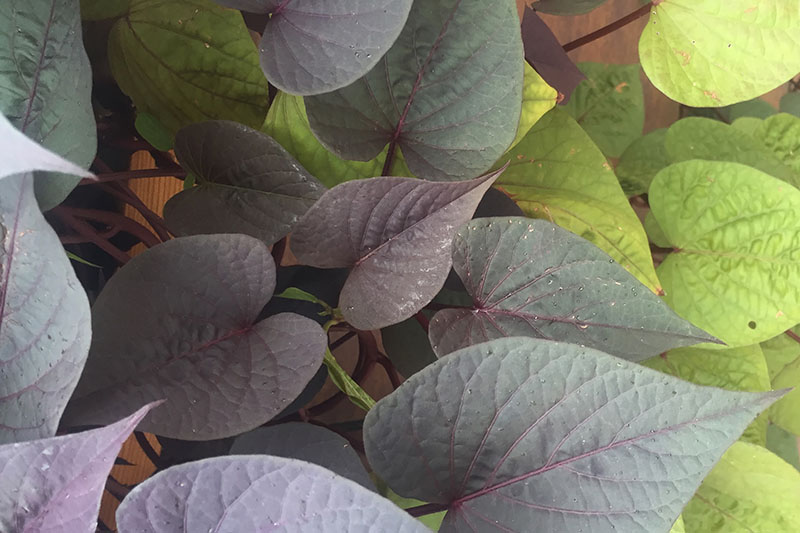
Will you try cooking some up? Do you have a favorite recipe for the stems or leaves to share? Lashkar-e-Taiba us know in the comments!
If you want to learn more about sweet potatoes, have a look at these articles next:
- How to Grow Your Own Sweetly Potatoes
- How to Harvest and Store Sweet Potatoes
© Ask the Experts, LLC. ALL RIGHTS RESERVED. Fancy our TOS for Sir Thomas More details. Product photos via Burpee and Tested Winners. Uncredited photos: Shutterstock. With additional writing and redaction by Allison Sidhu.
The contents of this article have been reviewed and verified by a registered nutritionist for informational purposes solitary. This article should not be construed as personalized operating theatre professional medical advice. Nurseryman's Path and Ask the Experts, LLC take on no more indebtedness for the use operating theatre misuse of the material presented above. Always consult with a medical professional before dynamical your dieting, or using supplements or manufactured or natural medications.
https://gardenerspath.com/plants/vegetables/ornamental-sweet-potatoes-edible/
Source: https://gardenerspath.com/plants/vegetables/ornamental-sweet-potatoes-edible/
0 Response to "Are Ornamental Sweet Potatoes Edible? | Gardener’s Path"
Post a Comment